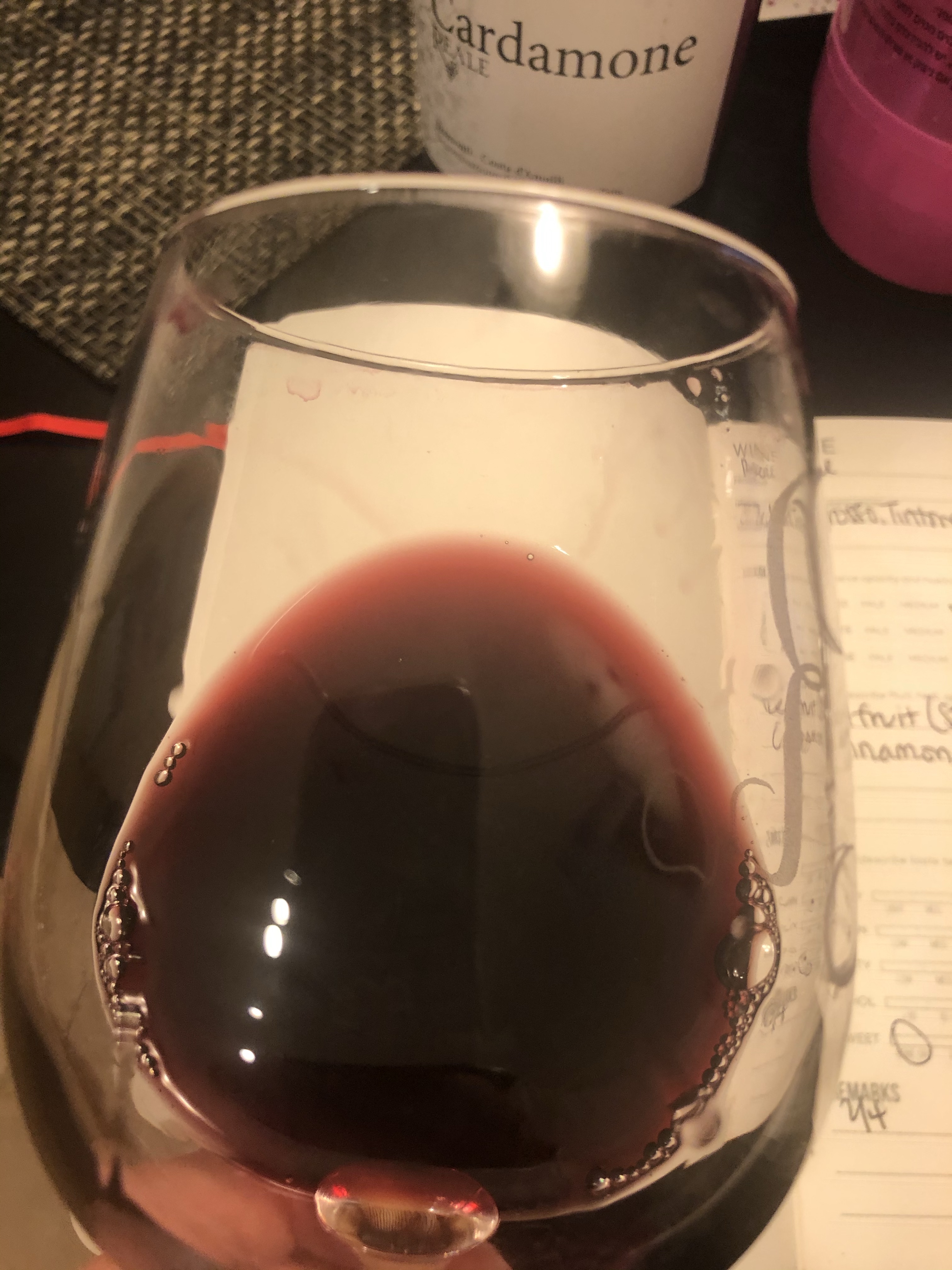
When you wine taste, just as when you eat, your eyes take it all in first. Pour your ‘taste’. In doing so, your glass should not be more than ⅓ or ½ full and should not surpass the widest part of the glass. This ensures you are still able to swirl the wine to allow more phenolic compounds (the smelly parts) to react with oxygen and make them more noticeable to the nose. This is greatly increased if you pour wine at room temperature. If wine is too chilled, it dulls the phenolic compounds. So, if you want to taste a wine then drink it, pour a bit then throw it in the freezer for a few minutes to bring the temperature down or put it in an ice bath with a good amount of salt (salt decreases the freezing level and allows the water to chill further). After pouring the wine, put the wine glass up to a white background and evaluate the color and clarity. Some wines are unfiltered and will look almost pixelated and cloudy. Most wines sold at major retailers will appear clear even if they are dark enough to be opaque. Next, put your thumb behind the glass. Can you see it? Do you struggle to see it? Is it a white wine that’s so bright it almost shines back at you? Then, look at the edges. Does the color of the wine go to the edge of the glass or is it a tiny bit back? If it’s white, would you say it’s straw, yellow, bronze, gold, amber, or brown? Are there notes of green? If it’s red, is it purple, ruby, garnet, or tawny?
After evaluating the color (that is a bit overwhelming so only move on to this step when you’re ready), then you’ll shove your nose into it and try to glean any smells you can get. You can buy a tasting wheel on Amazon for cheap to help with this step but you don’t have to (Google is a powerful tool). Mostly what you’ll start evaluating for are types of fruit, red vs blue vs black. Does it smell like strawberry, blueberry, blackberry, starfruit, apricots, peaches, citrus, jasmine, gardenia, honey suckle or lychee? After answering this, then ask is it ripe, underripe, overripe, baked, dried, candy? Do you smell vanilla, pepper, bread, bacon, butter, cheese, chocolate, or nuts? Then is there tobacco, mushroom, earth/dirt, rocks, baking spices, or stewed fruit? Or is the wine devoid of all of these? Do you smell wet cardboard, ammonia, petrol, plastic bags or band aids? Write down everything you smell. If you are unsure, write it down. You are not wrong. We all interpret smells and tastes differently. I was unsure of a lot of smells, so I put a sensory garden around my home. Wine allows you to stop and smell the roses, quite literally!
Finally, you get to the main event! Take a mouthful and swish it around. Open your mouth a tiny bit to aerate the wine on your palette to increase the volatility of the phenolic compounds that are the notes we get smell and taste. After 5 seconds or so, swallow the wine (or spit it is acceptable). And wait for a minute or two to evaluate how long it takes for the wine to leave. What do you taste? Does your mouth feel like sandpaper? Do you feel a tightening at back of your jaw? Are you experiencing increased salivation? Is your throat warm? Did the wine skip leg day or did it do whole body workouts? Is it sweet or bone dry? Did you miss something? Repeat!! If you are tired after all of these steps, you did it right. Wine tasting is mentally very stimulating. Just like working out, it takes time to build up the muscle that increases the ease in this process! Do not quit!
PS-If you know what ‘legs’ are in a wine, please forget you ever knew!
-TheLooseTannin